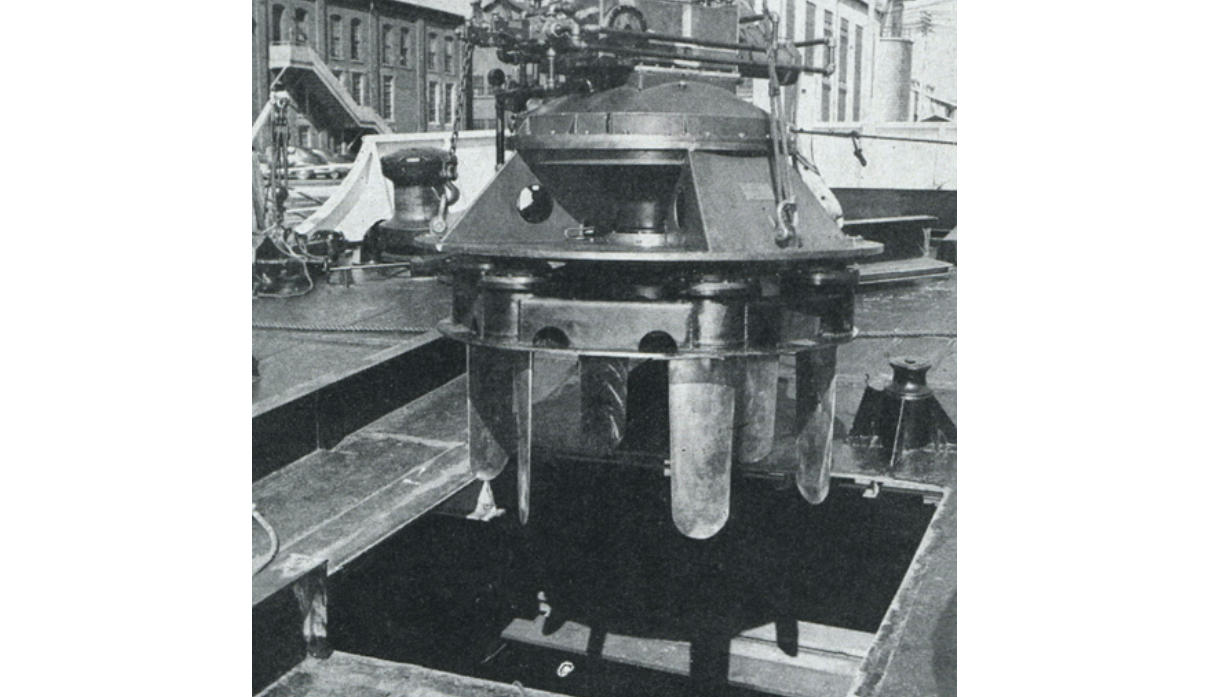
Frederick K. Kirsten
“Egg-Beater Wing Plane Imitates…Eagle” claimed Modern Mechanics in 1934. Yes, you read that correctly.
As early as 1921, German-American inventor Frederick K. Kirsten (1885-1953) was working on a wingless, rudderless airplane design. What does that even look like, you ask? Like this:
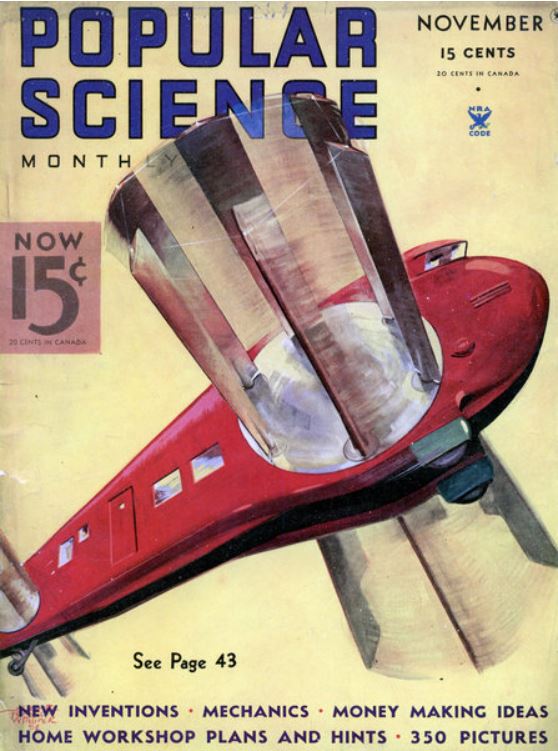
How does that thing work? Well, clearly not that effectively because it’s not what we’re flying around in in 2018. But Kirsten spent most of the rest of his life trying to perfect the “cyclo-copter” design. He insisted that this design would be an improvement over planes using multiple propellers because it could increase potential speeds, would reduce vision impairment – as the pilot could see through the blades when in motion, would be nearly silent, cost less, and could land at lower speeds and more vertically.
Kirsten had aircraft manufacturer William Boeing’s backing and (for a while) his money. They made a functional scaled model, but “[t]he aviation industrialist gave up in despair when our military and navel [sp] authorities were def to his pleas for a tryout” (Flying Magazine 1941).
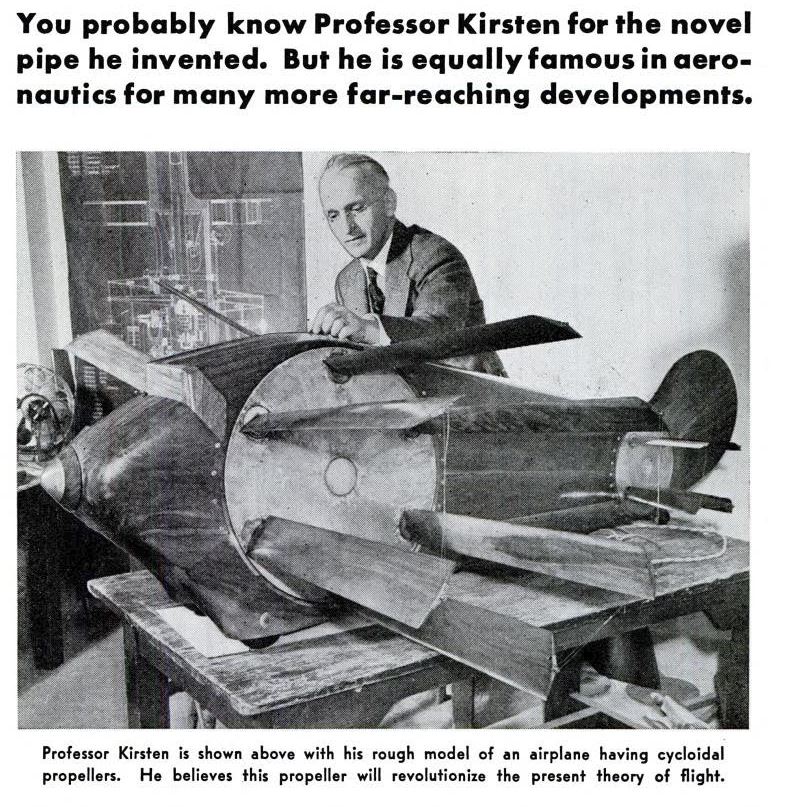
Interestingly, though, the cycloidal propeller design was adapted for ships! Oh, come on! You knew we were going to link this to the water somehow…
It’s kinda surprising that Kirsten didn’t think about adapting this for ship’s first, honestly. Many of his inventions (he had over 100) were pulled from his day to day life. For example, while he was working as a farm hand, in his 20s, he invented a stump-pulling device and a “death ray” (not the evil genius kind, unfortunately). This death ray was more of a hot lamp to kill apple-chomping moths. During World War II, he patented an air raid siren. And, when told smoking cigarettes would kill him, he invented a heat absorbing pipe. Apparently, his doctor said he could smoke the pipe under one condition – that Kirsten make one for the doctor. That conversation would probably go differently today… just saying. But, his pipes are still being produced and used today.
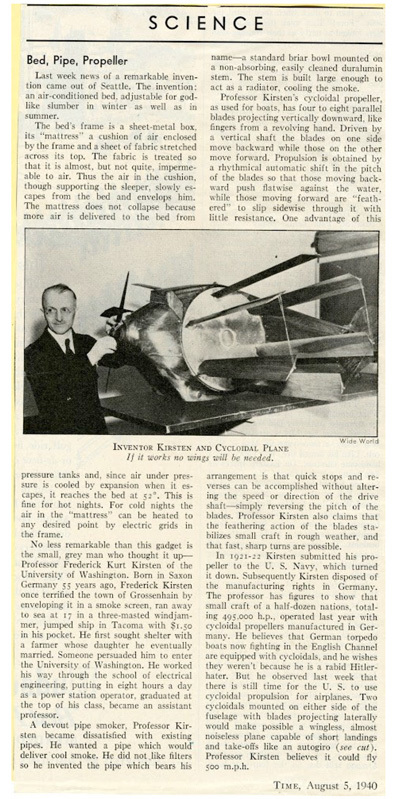
But, back to boats:
When the German government lost his scholarship application for the Emperor’s Academy of Marine Engineering, the 16-year-old joined the crew of Elfrieda, a three-masted sailing ship out of Hamburg. See why it’s surprising Kirsten didn’t start with marine inventions?
His sailing experience wasn’t great, so maybe that’s why he focused his inventive efforts elsewhere. He jumped ship in Washington state after the 9-month journey from Germany to the United States. Don’t call him a quitter until you know what he endured. While he was on board, his shipmates poured tar on him, shaved him with a 2-foot long wooden razor (yes, WOODEN), threw a blacksmith’s 8-pound hammer at him for taking his rain suit off three days after a storm (it was too soon), and threw a knife at him for laughing at another superstition! I’d run away, too.
Anyway, in 1924 (3 years into trying to make his propeller work for airplanes), Kirsten patented a ship moved by a cycloidal propeller. The propeller juts out of the hull at midship, aimed straight down. It looks funny, sure, but it actually has a really great turn radius – about the same as the length of the ship. And this type of propeller is still in use on some tug boats. The major manufacturer of cycloidal propellers was/is, Voith-Schnieder, a German firm. They patented an improved and simplified cycloidal propeller in 1931. During World War II, Flying Magazine reminds readers, “It is only fair to add here that it is no fault of Kirsten that development of the cycloidal propeller fell into foreign hands. He was unable financially to maintain his patents abroad.”
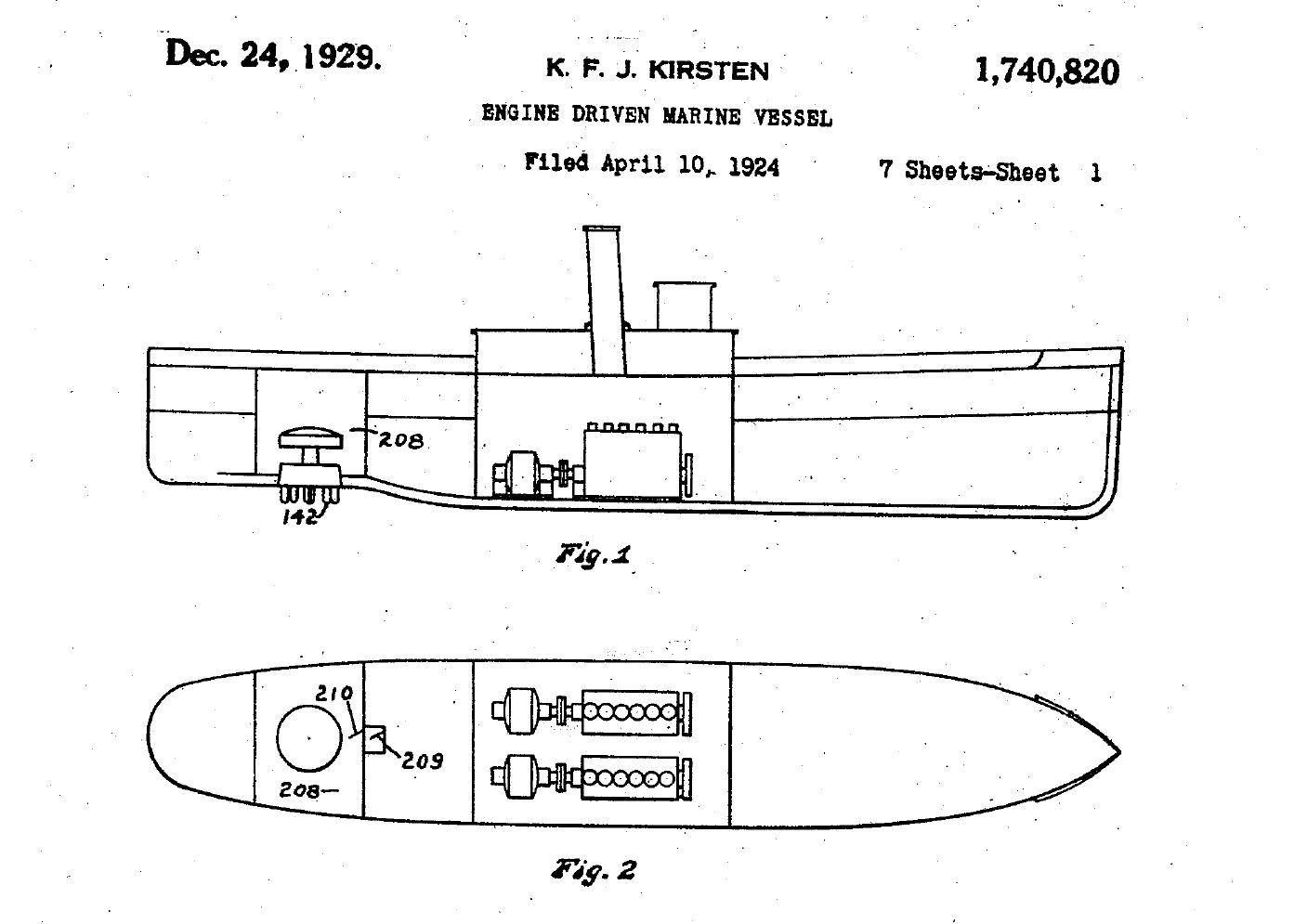
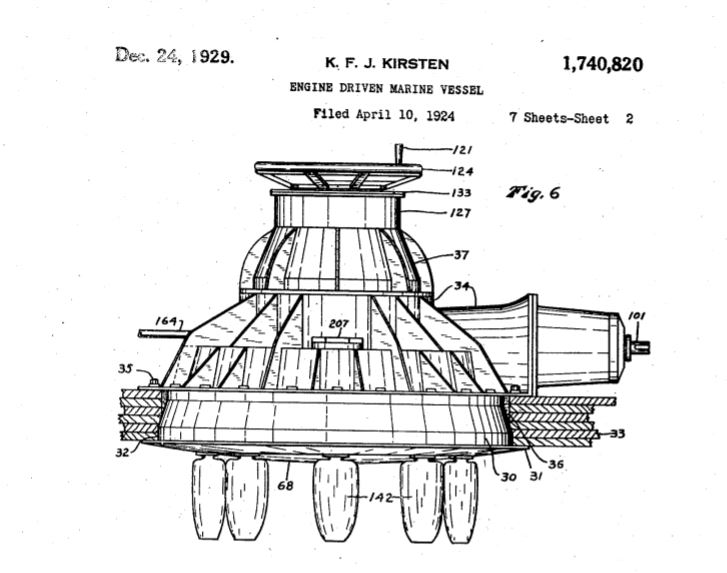
Eventually, Kirsten realized his propeller was not effective for air travel. But, hey, we think boats are cooler anyway. And this makes him an awesome #mariner. AND if you want to learn more about cycloidal propeller in maritime use, we have one at the Museum! It was used on a Hampton Roads ferry boat in the late 1940s – early 1950’s. Cool, right?
